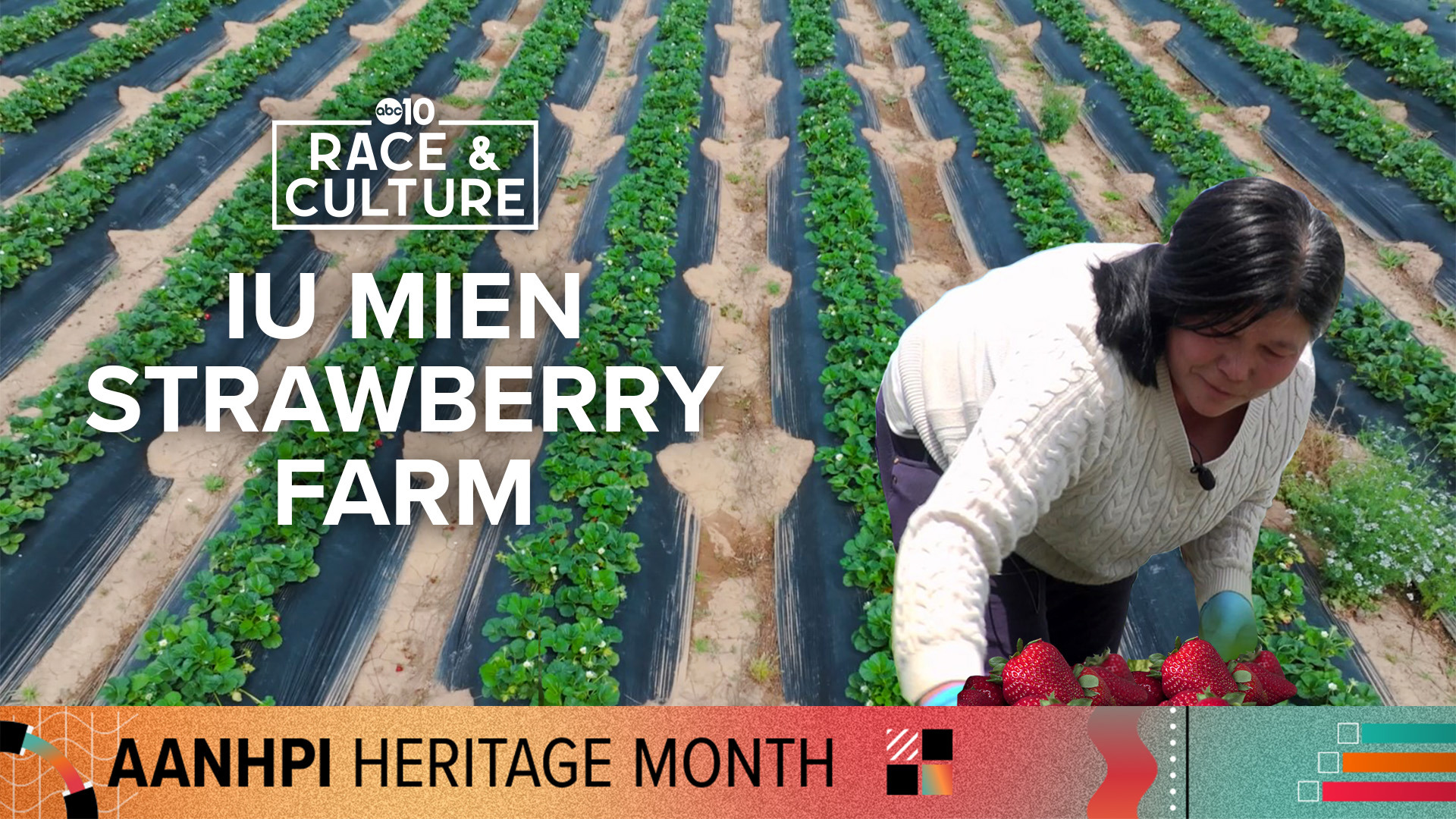SACRAMENTO, Calif. — Behind every strawberry, there's a story.
For Chan Finh Saelee, a Iu Mien strawberry farmer, her story started decades ago in her home country of Laos.
Iu Mien people are a Southeast Asian ethnic group with indigenous roots in China who fled conflict during the Laotian Civil War. In the early 1960s, the Iu Mien, along with the Hmong and Lao, were recruited to aid the United States CIA in fighting communist forces in Laos in an operation known as the Secret War.
As American troops pulled out of the Vietnam War, Iu Mien people fled the communist regime in fear of persecution for their involvement with the CIA operation. Saelee's younger years are also overshadowed by memories of war.
"When I was 10, when we had to flee, my mom had to carry me," Saelee said.
When the shooting stopped, she was able to hold her mother's hand and walk, but once it started up again, she was back in her mother's arms.
Eventually, Saelee's family made it to Thailand where they lived in refugee camps.
GET MORE RACE & CULTURE FROM ABC10:
►Explore the Race & Culture home page
►Watch Race & Culture videos on YouTube
►Subscribe to the Race and Culture newsletter
Sen Saetern, a writer who is preserving stories of the Iu Mien community and also wrote his own story on strawberry stands, explained how many Iu Mien people sought refuge in the United States.
"There are 30,000 of us here, with 15,000 being in the Sacramento area," he said.
Saelee is just one of many families who ended up calling Sacramento home more than 30 years ago. With no education and children to feed, she worried about finding work. But there was one thing she did know.
"We know what to farm in every season," Saelee said.
Iu Mien people practiced slash-and-burn agriculture in Thailand and Laos. In Sacramento, Saelee and her family would learn about strawberry farming, a trade passed on from Japanese Americans to Hmong immigrants and finally to Iu Mien people.
'A cultural phenomenon'
"Iu Mien and strawberry farms is a cultural phenomenon in Sacramento. It's part of our identity as Iu Mien Americans. I think it's part of our identity as Sacramentans," Saetern said.
It was a story of survival that grew. Saetern shared there are now about 100 strawberry farms run by Iu Mien people in the Sacramento and Sonoma valleys. An interactive map shows just some of the stands run by Hmong and Iu Mien farmers.
"Most of this was through word of mouth... our parents pretty much calling each other like, 'Hey, this is how you can make a living,'" Saetern said.
After years of working on other families' strawberry fields, Saelee's family saved up enough money to lease their own land.
On Florin Perks Road in South Sacramento, you'll see a sign on the side of the road with their name, Lee's Berries. They grow and sell fresh strawberries and other fruits, flowers and even vegetables. It requires early mornings and long hot days during the summer, but it's rewarding.
"Doing this kind of work keeps elder Mien folks like me happy," Saelee said.
Saelee said picking the perfect strawberry comes down to eyeing its ripeness.
"If they're ripe, they're sweet. If they're not ripe, they're sour," Saelee said.
The name Lee's Berries is a story within itself. Lee is short for Saelee. 'Sae' is a prefix commonly found in Iu Mien last names.
"When we went through the refugee camps in Thailand, the way they processed us, they fixed the Thai word, Sae, which means clan," Saetern explained. And Lee is one of 12 Iu Mien clan names.
Strawberry farming is also part of Saetern's identity. He grew up with memories of his parents working on various strawberry farms, so much so that he has become a self-described "strawberry snob" — an earned right when you've farmed them yourself.
"I could definitely taste when it's out of season when it's not ripe enough," Saetern said, smiling.
Planting seeds for the next generation
As time changes, so does the strawberry story of the Iu Mien people.
"It's a dying legacy that's facing a succession crisis," Saetern said.
He said that most of the farms are run by first-generation immigrants who are now aging out. The younger generations are searching for more.
"Honestly, it's hard work, and they have more opportunities here, especially with education. There's no language barrier for them. So they can move beyond just being a farmer. I think that's what their parents want," he said.
A new life is something Saelee wants for her own family. Her children don't know how to farm, but sometimes they still help her run the strawberry stand. The fate of her strawberry farm is uncertain as Saelee plans to retire in about two years to take care of her grandchildren and relax. But for now, she's still up with the sunrise, harvesting strawberries and selling them, one bright green basket at a time.
"We Mien elders just know how to farm like this and to us, it is a good life," Saelee said.
A good life is planted by one generation, for the next.
Watch more AAPI stories: Culture through cloth: Hmong artisans pass down traditions of 'flower cloths' and 'story cloths'

